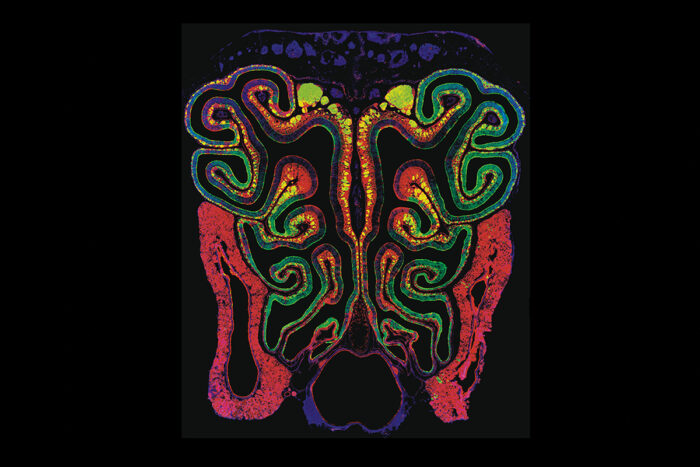Developmental biologists win BioArt competition
Image of mouse olfactory epithelium shows the beauty in science
 Lu Yang
Lu YangThis image showing the structures of the mouse olfactory system was named a winner of the 2018 BioArt competition. Washington University graduate student Lu M. Yang, working in the lab of David M. Ornitz, MD, PhD, created the image.
An image of the maze-like structures of the mouse olfactory system recently was named a winner of the 2018 BioArt competition. The Federation of American Societies for Experimental Biology holds the contest annually.
Washington University graduate student Lu M. Yang, working in the lab of David M. Ornitz, MD, PhD, the Alumni Endowed Professor of Developmental Biology, created the image of the mouse olfactory epithelium. This sheet of tissue develops in the nasal cavity and plays an important role in determining the sensitivity of an animal’s sense of smell.
In a study published last year, the researchers uncovered new details about development of the olfactory epithelium and underlying structures called turbinates — bony protrusions that extend into the nasal cavity. Yang, Ornitz and their colleague Sung-Ho Huh, PhD, formerly a postdoctoral researcher in Ornitz’s lab and now at the University of Nebraska Medical Center, identified a new type of stem cell that gives rise to the entire olfactory sensory epithelium. They also showed that these specialized stem cells send molecular signals that regulate growth of the underlying turbinates to increase the surface area of the nasal cavity.
The findings have implications for understanding how the sense of smell has evolved in different animals and why some animals are more sensitive to smell than others. Dogs, for example, can be trained to use their extraordinary olfactory systems to locate drugs, bombs, bed bugs, missing hikers and even tumors.
To see all 2018 BioArt winners, click here.






